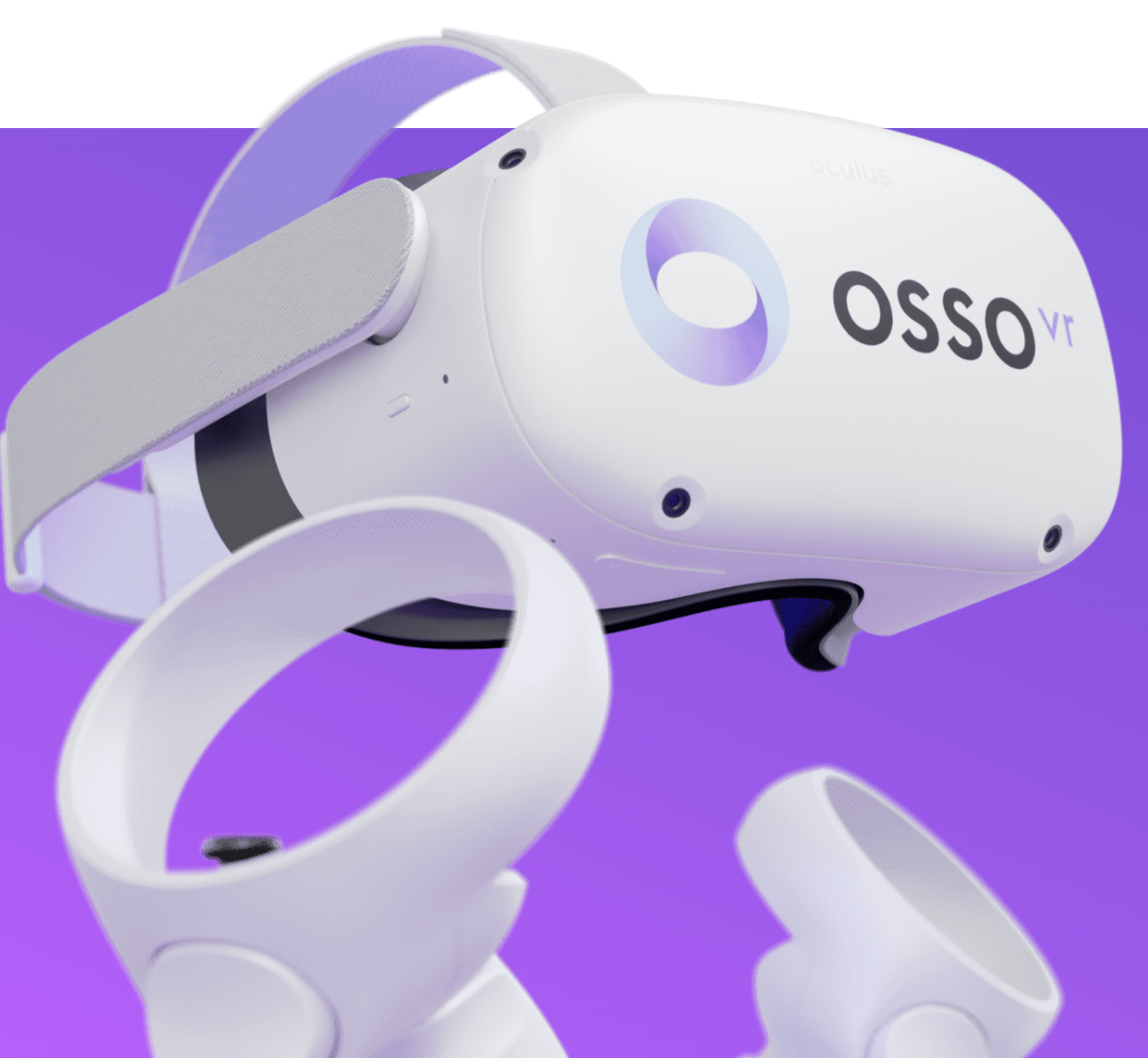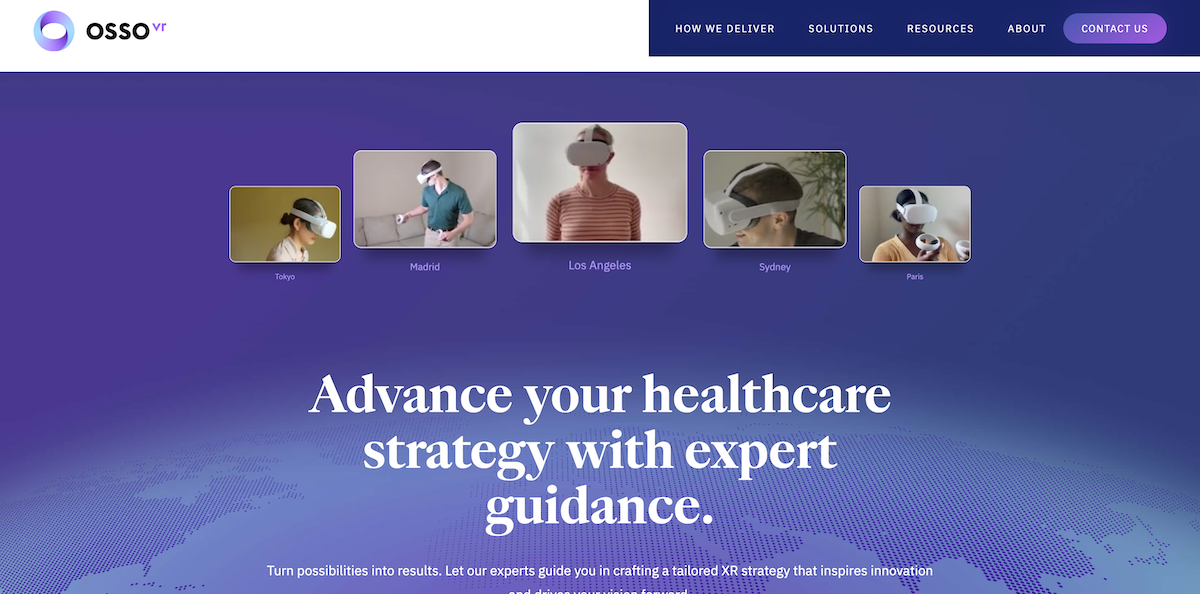In episode 222 of the Disruptors for GOOD podcast, I had the privilege of speaking with Justin Barad, MD, CEO of Osso VR. We explored how his groundbreaking virtual reality platform is transforming surgical training, improving healthcare outcomes, and setting new standards in medical education worldwide.
Subscribe on Apple Podcasts
Subscribe on Spotify
Subscribe on Amazon Music
Traditional surgical training methods, while foundational, often face limitations in scalability, accessibility, and adaptability to new technologies. Enter Osso VR, a groundbreaking platform that leverages virtual reality (VR) to revolutionize surgical training and assessment.
By providing immersive, hands-on experiences, Osso VR is setting new standards in medical education, ensuring that healthcare professionals are well-equipped to deliver optimal patient care.

The Genesis of Osso VR
Osso VR was founded in 2016 by Dr. Justin Barad, a UCLA and Harvard-trained pediatric orthopedic surgeon. With a background in bioengineering and a passion for video game development, Dr. Barad identified a critical gap in surgical training methodologies.
Traditional approaches often lacked the flexibility and realism needed to keep pace with rapidly advancing medical technologies.
This realization led to the creation of Osso VR, aiming to democratize access to high-quality surgical training through immersive VR experiences.
Transforming Surgical Training Through Virtual Reality
Osso VR offers a comprehensive platform that combines cinematic-quality VR with clinically accurate simulations. This fusion allows healthcare professionals to practice and master surgical procedures in a risk-free, virtual environment.
The platform's key features include:
- Immersive Training Modules: Users can engage in realistic simulations of various surgical procedures, enhancing muscle memory and procedural understanding.
- Performance Analytics: Integrated analytics provide objective assessments of a user's skills, tracking progress and identifying areas for improvement.
- Collaborative Learning: The platform supports multi-user experiences, enabling teams to practice together, fostering communication and teamwork.

Impact on Healthcare Education
The adoption of Osso VR has led to significant improvements in surgical training outcomes:
- Enhanced Skill Acquisition: Studies have shown that users of Osso VR demonstrate a 230% improvement in overall surgical performance compared to traditional training methods.MD+DI
- Increased Accessibility: By offering training modules in multiple languages and being available in over 50 countries, Osso VR ensures that high-quality surgical education is accessible globally.
- Scalability: The platform's digital nature allows for rapid updates and dissemination of new procedures, keeping healthcare professionals abreast of the latest advancements.
Recognition and Achievements
Osso VR's innovative approach has garnered numerous accolades, including:
- TIME Magazine’s Best Inventions
- Fast Company’s Most Innovative Healthcare Company
- SXSW Innovation Award for VR
These honors underscore the platform's significant contributions to healthcare education and its potential to reshape the future of surgical training.
Future Aspirations
Looking ahead, Osso VR aims to expand its repertoire of training modules across various medical specialties, further enhancing the depth and breadth of its offerings.
The platform is also exploring integrations with emerging technologies, such as augmented reality (AR) and artificial intelligence (AI), to provide even more personalized and effective training experiences.
Episode Transcript
Grant Trahant (00:16):
Awesome. Thank you so much, Justin, for joining me today! I'm excited to talk about OsoVR—its mission, vision, and the impacts it has had and will continue to have on people’s lives. But before we dive into all that, can you share your journey, career path, and the moment that inspired you to start this company?
Justin (00:47):
Sure! How much time do you have?
Grant Trahant (00:49):
As much time as you need.
Justin (00:52):
Growing up in LA, I wanted to be a video game developer. I was passionate about gaming, so I taught myself to program, played a ton of games, and even interned at Activision, earning a game credit. But like many people, a family medical issue became a wake-up call for me. I wondered if I could use my skills from gaming in healthcare.
That led me to biomedical engineering at UC Berkeley, where I learned to apply technology to solve healthcare problems. I wanted to invent healthcare technology but didn’t know how. While job-hunting after college, a gastroenterologist told me, "To invent something, you need to understand the problem. Become a doctor to understand medical challenges." I thought he was insane but eventually decided to give it a shot.
I got into UCLA for medical school and fell in love with orthopedics—a magical specialty where you can help people walk again, sometimes the same day. However, during my training, I realized that how we train healthcare providers—doctors, nurses, surgeons—hasn't advanced much in decades. There’s too much to learn, and the learning curve for modern procedures has grown exponentially.
Grant Trahant (02:51):
That’s fascinating.
Justin (03:08):
Absolutely. For example, modern surgeries use minimally invasive techniques with constantly evolving technology. The learning curve for new procedures can require 50–100 cases, compared to just 10 cases for traditional surgeries. Yet, there’s no standardized system to objectively assess a healthcare provider’s skills, unlike pilots who regularly recertify using simulators.
Virtual reality (VR) felt like the perfect solution. When I first tried the Oculus Rift DK1, I immediately saw its potential for healthcare training. That was the seed for OsoVR. After prototyping and winning an award, I officially launched the company in 2016. Now, here we are, steadily growing.
Grant Trahant (07:01):
Incredible journey. For those unfamiliar, what is OsoVR?
Justin (07:15):
OsoVR is an anytime, anywhere training and assessment platform for healthcare providers. Using off-the-shelf VR tech like MetaQuest or Apple Vision Pro, users can practice and get assessed on procedures ranging from joint replacements to IV insertions. Studies show our technology improves performance by 200–300% compared to traditional training. We offer over 300 training modules across almost every medical specialty, training 3,000–5,000 professionals monthly.
Grant Trahant (08:14):
Wow! Is it accessible to anyone, or do users need institutional access?
Justin (08:47):
Currently, most content is accessed through healthcare systems, residency programs, or medical device companies. Some procedures are proprietary, so they aren’t widely available. But the vision is to make it accessible to anyone interested in healthcare, from students to career explorers.
Grant Trahant (12:13):
How are you integrating this into medical schools, universities, or even high schools?
Justin (12:23):
We’ve launched Oso Academy, a VR residency program focused on orthopedics. Initially, we targeted surgeons and complex procedures, but now we’re expanding to nurses and other large-scale healthcare applications. Nurses handle procedures like IV insertions and catheter placements daily, yet their training can be spotty. VR allows them to learn, refresh, and get assessed efficiently—anytime, anywhere.
Grant Trahant (14:33):
That makes so much sense. Imagine the potential in disaster relief training or high-stress environments. VR can replicate chaotic scenarios—sounds, crowds, distractions—that are impossible to recreate in a classroom.
Justin (17:15):
Exactly. The possibilities are endless, but narrowing our focus has been challenging. We must balance creating immersive experiences, like disaster relief scenarios, with perfecting core technical skills, such as IV placements.
Grant Trahant (19:03):
What about getting the healthcare industry to embrace this new approach? Was that difficult?
Justin (19:42):
It was challenging. Early on, many dismissed VR as "video game tech" unsuitable for serious training. To prove them wrong, we collaborated with academic medical centers like UCLA to validate our platform. Thankfully, the studies showed positive results, but changing deeply rooted traditions in healthcare takes time.
Grant Trahant (24:00):
The younger generation seems primed for this. High schoolers already use VR for gaming—making this technology feel natural. What’s your business model, and how has it evolved?
Justin (24:43):
The business has two parts: a custom content studio for creating VR modules and a platform that licenses training curriculums and analytics tools. We work closely with partners to tie training outcomes to measurable ROI, such as reduced costs and improved efficiency.
Grant Trahant (26:37):
How do you measure success? Is it patient outcomes, reduced errors, or empowering more people to enter healthcare?
Justin (26:59):
We’re still working on directly tying training to patient outcomes like lower complication rates or costs. However, data highlights the system’s shortcomings—like only 31% of surgical residents being independently capable after five years of training. By improving skills through VR, we aim to bridge those gaps on a global scale.
Grant Trahant (32:03):
What’s next for OsoVR in the next 3–5 years?
Justin (32:32):
Scaling is our priority—more content, more users, and ultimately proving that VR training improves patient outcomes. We also want to expand access, especially in underserved regions, to ensure everyone receives high-quality healthcare.
Grant Trahant (34:00):
How can institutions or individuals get involved?
Justin (34:33):
Visit our website, connect with me on LinkedIn, or email me at justin@ossovr.com. I encourage everyone to try VR for themselves—it’s an experiential technology that words can’t fully capture.
Grant Trahant (35:16):
Amazing. We need programs to bring VR headsets into schools, like how laptops are now standard. Thanks for sharing your incredible journey, Justin. Best of luck for the next decade!
Justin (36:53):
Thanks, Grant. Great talking to you!








